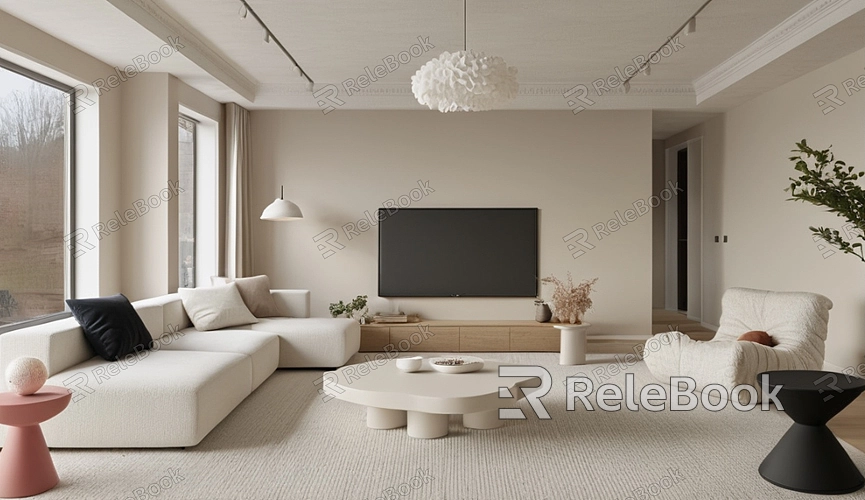Why Does Rendering 3D Models Take So Long?
In modern computer graphics technology, rendering 3D models is a crucial process. Rendering is not just about converting a three-dimensional model into a two-dimensional image but also involves light and shadow effects, material details, and various visual effects. Due to the complexity of the rendering process, many people find that rendering 3D models often takes a considerable amount of time. So, why does rendering a 3D model take so long? This article will delve into this question.

The Complexity of Rendering
Rendering is the process of converting a 3D model into a 2D image, but this process is much more complicated than simply drawing a picture. First, 3D models contain a lot of geometric data and detailed information. Even the smallest change can affect the final image. This level of detail requires complex calculations to present, leading to longer rendering times.
Additionally, rendering needs to calculate light and shadow effects. This includes factors like the intensity, direction, and color of light sources, as well as the reflection and refraction characteristics of the model's surface. Each light ray's path through the scene must be accurately calculated to ensure the final image is realistic. To achieve the best results, rendering engines often simulate the propagation of light rays, which is a time-consuming process.
The Demand for Computational Resources
Rendering 3D models requires substantial computational resources. Modern rendering engines typically need powerful computing capabilities to handle complex light and shadow effects and material characteristics. This requires significant CPU or GPU resources. High-quality rendering often demands high-performance hardware, such as multi-core CPUs or high-end GPUs, and the computational power of these devices directly affects rendering speed.
Moreover, the calculations involved in rendering include not only light and shadow simulations but also texture mapping, anti-aliasing, and more. These tasks are processed in parallel, with each small calculation taking time to complete. To improve rendering efficiency, many rendering engines use distributed computing, spreading tasks across multiple nodes, but even so, the entire process still requires a considerable amount of time.

The Trade-off Between Quality and Speed
During the rendering process, there is often a trade-off between quality and speed. High-quality rendered images usually require more computation time. For example, realistic light and shadow effects, detailed material textures, and complex reflections all contribute to increased rendering time.
Conversely, if speed is the primary goal, image quality may be sacrificed. To complete rendering in a shorter time, one might need to lower image resolution, simplify light and shadow effects, or reduce detail. This trade-off is a common aspect of the rendering process, so in practice, many people need to choose rendering settings based on specific needs and hardware conditions.
The Complexity of Rendering Algorithms
The choice of rendering algorithm also significantly impacts rendering time. Advanced rendering algorithms, such as path tracing and global illumination, can simulate more realistic light and shadow effects but have higher computational complexity, leading to longer rendering times. In contrast, simpler algorithms, while faster, may not achieve the best visual results.
The algorithms used in rendering engines determine the precision of calculations and the quality of the rendered image. Choosing the right rendering algorithm can help minimize rendering time while meeting visual requirements.
The Complexity of the Scene
The complexity of the scene also affects rendering time. A scene with a lot of detail, complex lighting setups, and high-resolution textures requires more time to render. In contrast, simpler scenes and lower-resolution textures will significantly reduce rendering time.
To optimize rendering time, many designers and developers use techniques such as simplifying model details, reducing unnecessary light sources, and optimizing texture usage. These optimization measures can effectively reduce the complexity of rendering, thereby improving efficiency.
The reason rendering 3D models takes a long time involves the complexity of rendering, the demand for computational resources, the trade-off between quality and speed, the complexity of rendering algorithms, and the complexity of the scene. Understanding these factors can help us better optimize the rendering process and improve efficiency. If you’re interested in 3D models and textures, visit the Relebook website to download high-quality 3D models and textures, and enhance your design experience.
FAQ
Why is my rendering speed so slow?
Rendering speed can be slow due to various factors, including high-quality rendering settings, insufficient hardware performance, and high scene complexity. Checking your rendering settings, trying to lower image quality, or using more powerful hardware can help improve rendering speed.
How can I improve rendering efficiency?
To improve rendering efficiency, you can optimize the scene, simplify model details, reduce the number of light sources, and adjust rendering parameters. Choosing the right rendering algorithm is also crucial for enhancing efficiency.
Does the complexity of the model affect rendering time?
Yes, the complexity of the model directly impacts rendering time. Complex models and scenes require more computational resources and time to process while simplifying the model can significantly reduce rendering time.
Is GPU rendering faster than CPU rendering?
In general, GPU rendering is faster than CPU rendering because modern GPUs are designed for handling a large number of parallel computing tasks, which are well-suited for complex rendering processes.

